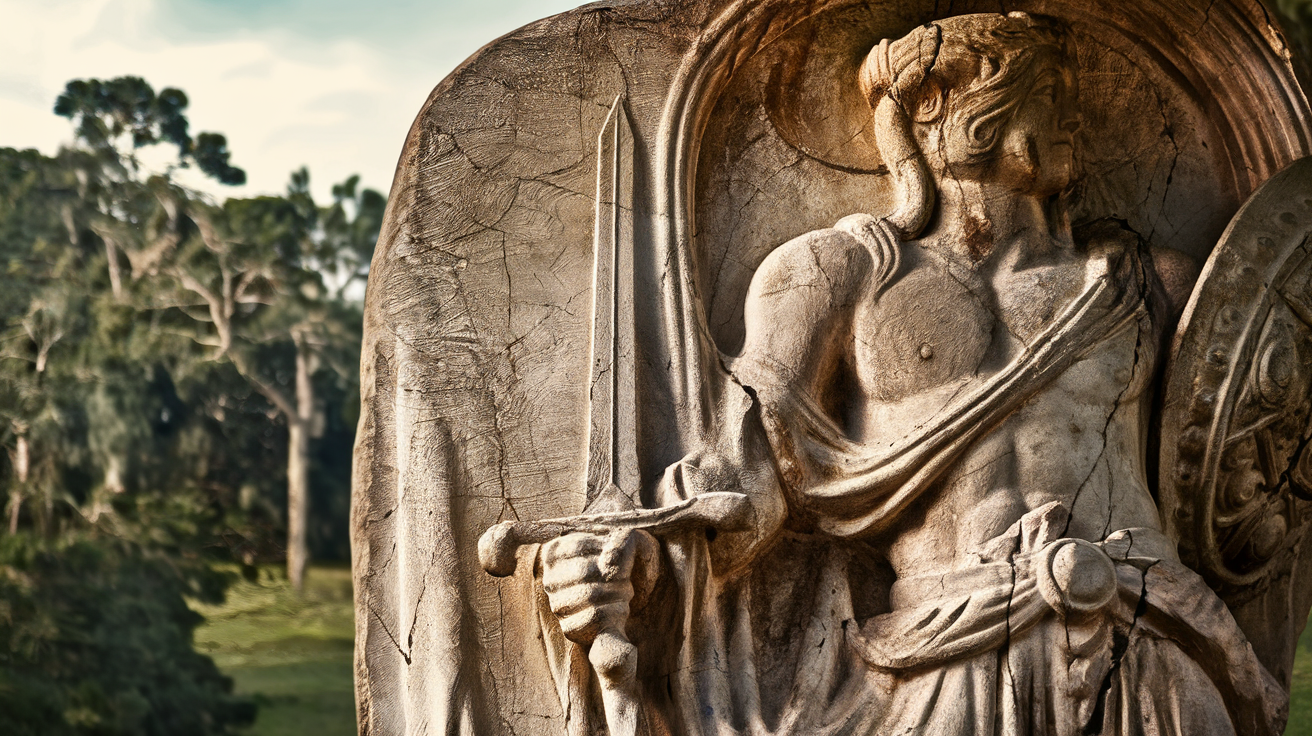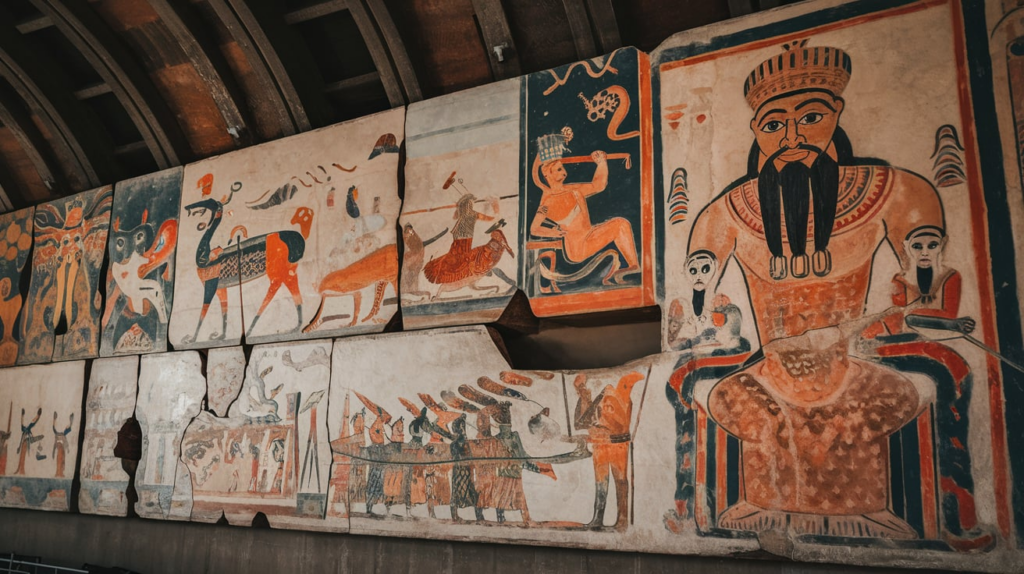
Introduction
Art is a mirror of culture, reflecting the thoughts, beliefs, and aspirations of the people who create it. Ancient artz, in particular, offers a fascinating glimpse into the lives and traditions of early civilizations. From the intricate cave paintings of Lascaux to the majestic sculptures of ancient Greece, it showcases humanity’s innate desire to communicate, express, and create. This exploration into the past reveals how art has shaped history and continues to inspire the present.
What Defines Ancient Artz?
It refers to the creative expressions of early civilizations, spanning thousands of years and diverse cultures. These artworks are often deeply rooted in religious, political, and social contexts, serving purposes beyond decoration. The beauty of ancient artz lies in its timelessness, as the themes and techniques used by ancient artists still resonate today.
Critical Characteristics of Ancient Artz
- Symbolism
Ancient art is rich with symbols that carry spiritual, cultural, or mythological meanings. For example, Egyptian art often used the ankh to symbolize life, while Native American art employed animals to represent spiritual guides. - Durable Materials
Many ancient artworks were created using durable materials such as stone, clay, and metal, ensuring their preservation for millennia. - Functional and Decorative
Ancient art often blended utility with aesthetics. Pottery, tools, and jewelry were adorned with intricate designs, making them practical and beautiful.
The Origins of Ancient Artz
The story begins with early human societies, where art was a means of communication and storytelling. Cave paintings, such as those in Altamira and Lascaux, are among the earliest examples. These artworks often depicted hunting scenes, suggesting a connection between art and survival.
As civilizations evolved, ancient art became more sophisticated. Art was used to honor gods and rulers in Mesopotamia, the cradle of civilization. Similarly, in ancient Egypt, monumental structures like the pyramids and the Sphinx demonstrated the artistic and architectural ingenuity of the time.
Cultural Diversity in Ancient Artz
One of the most compelling aspects of ancient art is its diversity. Every culture contributed unique styles, techniques, and themes to art.
Egyptian Art
Known for its iconic hieroglyphs and statues, Egyptian art emphasized order and symmetry. Vibrant colors and symbolic imagery made it a cornerstone of ancient art.
Greek Art
Ancient Greek art celebrated the human form, capturing beauty and movement in sculptures like the Venus de Milo and the Discobolus. Greek pottery also showcased storytelling through intricate patterns and scenes.
Chinese Art
In ancient China, art was deeply influenced by philosophy and nature. Ink paintings, calligraphy, and jade carvings are prominent examples of Chinese contributions to it.
Mesoamerican Art
Civilizations like the Maya and Aztecs created striking works, from intricate carvings to grand pyramids. Their art often reflected religious beliefs and astronomical knowledge.
Techniques and Materials Used in Ancient Artz
The creation of ancient artz required mastery of various techniques and materials.
- Sculpting
Ancient sculptors worked with marble, bronze, and wood to create lifelike statues and intricate carvings. - Painting
Natural pigments were extracted from minerals, plants, and animals to create paints. These were used in murals, pottery, and manuscripts. - Weaving and Textiles
Textile art was an essential aspect of ancient art, with artisans creating intricate patterns on cloth using natural fibers and dyes. - Metalwork
Gold, silver, and bronze were shaped into jewelry, weapons, and ceremonial objects, showcasing the metallurgical skills of ancient societies.
The Significance of Ancient Artz
It is a collection of beautiful objects and a history, culture, and human achievement repository.
- Preservation of Culture
Ancient artz provides valuable insights into early civilizations’ customs, beliefs, and daily lives. - Inspiration for Modern Art
Many contemporary artists draw inspiration from ancient techniques and themes, bridging the gap between the past and present. - Connection to Spirituality
Much ancient art was created for religious purposes, bridging the human and the divine.
How Ancient Artz Influences Today’s World
The legacy of ancient artz is evident in modern architecture, fashion, and design. Motifs from ancient Egypt, Greece, and other civilizations frequently appear in contemporary works, demonstrating their enduring appeal. Furthermore, the techniques perfected by ancient artisans continue to influence today’s artists and artisans.
Exploring Ancient Artz Today
For those interested in experiencing ancient art firsthand, museums and archaeological sites offer a treasure trove of artifacts and information. Renowned institutions like the British Museum, the Louvre, and the Metropolitan Museum of Art house extensive collections of ancient artz, allowing visitors to connect profoundly with the past.
Additionally, advancements in technology have made ancient artz more accessible. Virtual tours, 3D reconstructions, and online databases enable people worldwide to explore these masterpieces from the comfort of their homes.

The Role of Storytelling in Ancient Artz
Storytelling was a central element of ancient artz, allowing communities to pass down knowledge, beliefs, and traditions through generations. Visual narratives were often etched onto pottery, walls, and monuments, portraying significant events, myths, and daily life. For instance, the murals of the Mayans vividly illustrate their gods, rituals, and celestial observations. Similarly, Greek vases often depicted scenes from mythology, immortalizing tales of heroes and gods. This emphasis on storytelling underscores how ancient art served as both an educational tool and a cultural record.
The Influence of Nature on Ancient Artz
Nature was a profound inspiration for ancient art, influencing its themes, materials, and designs. From the detailed animal figures in Paleolithic cave paintings to the lotus motifs in Egyptian temples, the natural world played a central role in shaping artistic expression. Many ancient cultures viewed nature as sacred, integrating its elements into their works to symbolize harmony and spirituality. For example, ancient Chinese art often depicted landscapes with flowing rivers and towering mountains, reflecting the philosophical principles of balance and unity.
Preserving the Legacy of Ancient Artz
Preservation efforts for ancient art are crucial to maintaining this invaluable cultural heritage. Environmental factors, urban development, and human activities threaten many ancient sites and artifacts. Institutions and archaeologists worldwide are dedicated to restoring and conserving these treasures, ensuring they remain accessible for future generations. Advanced techniques, such as laser scanning and climate-controlled displays, protect fragile artworks. By preserving it, we safeguard the timeless stories and traditions that connect us to our shared human history.
Conclusion
Ancient art stands as a testament to humanity’s creativity and resilience. Through its diverse forms and enduring beauty, it inspires and educates, bridging the gap between ancient and modern times. By exploring and preserving ancient art, we honor the legacy of our ancestors and ensure that their stories remain alive for generations to come.


